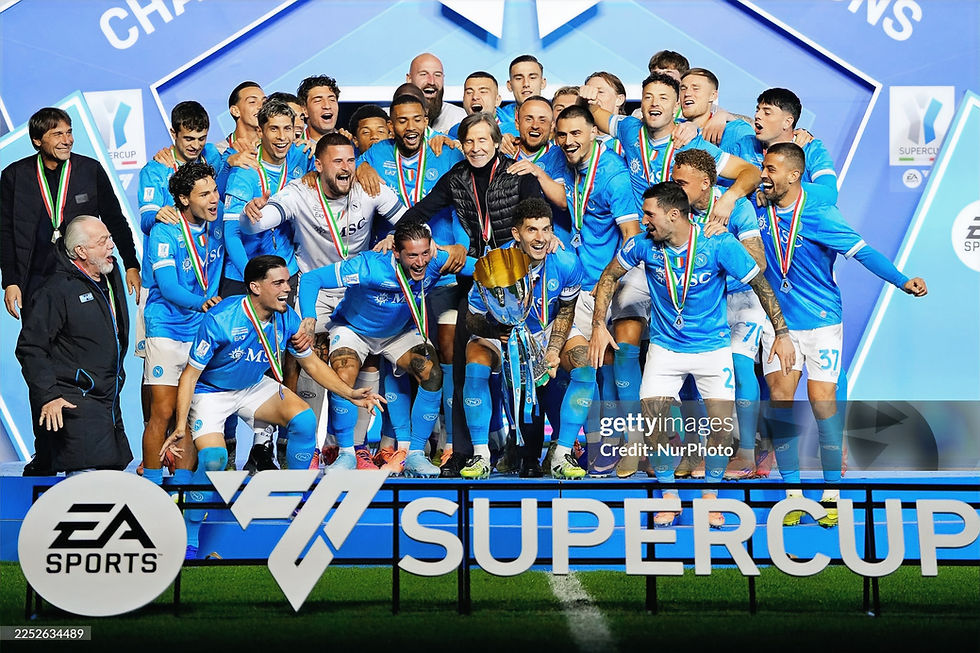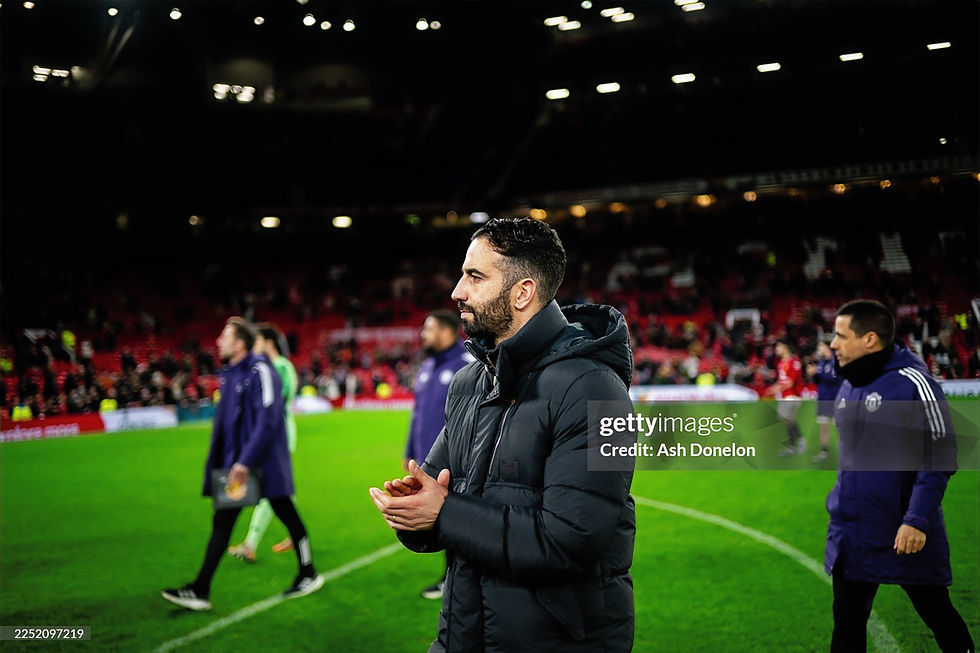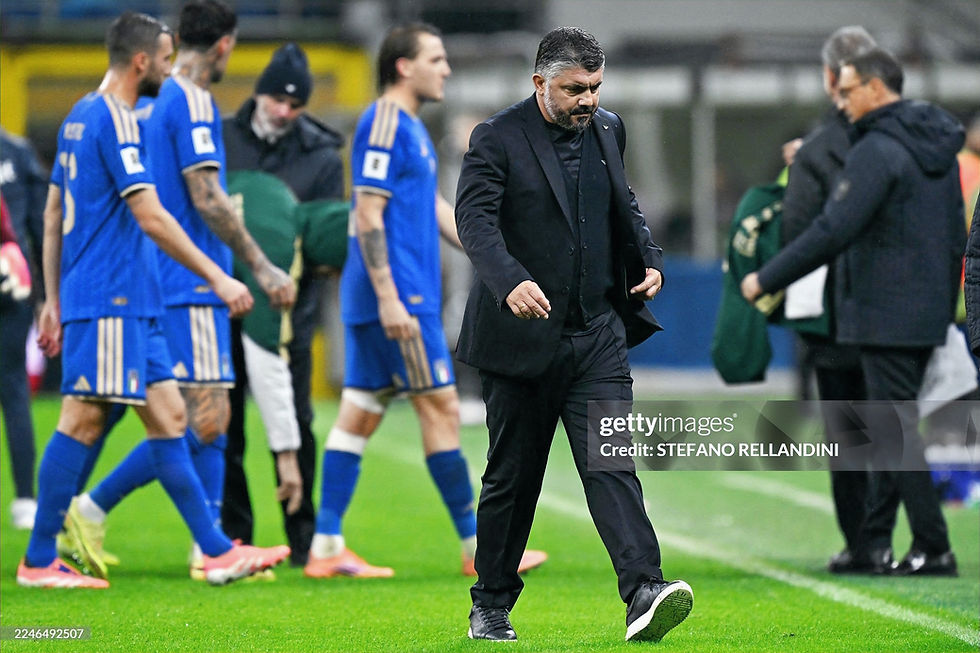The revamped FIFA Club World Cup - What are the main takeaways a week in?
- Christian Paris
- Jun 24
- 5 min read

Over a week since the refreshed iteration of FIFA’s Club World Cup has kicked off, the perception and scrutiny has not disappeared, in fact the polarising new format has if anything received further reaction after the opening rounds of the competition.
It was an updated version of a competition that was strictly a knockout tournament, where the victors of each premier continental club title faced off, with the last of the old format coming when Manchester City won the honour for the first time in 2023 after they had won the UEFA Champions League.
Criticism of the increase to 32 participating clubs has been long-standing, with questions surrounding its timing, the impact on the players, and general interest in the competition unclear, whilst it’s important to discuss where these doubts are rooted from, and their validity.
We need to certainly discuss why. FIFA’s President Gianni Infantino labelled the tournament as “something special” and as “history”, but at what cost? It’s clear this is a move to compete with UEFA and the Champions League, the governing body obviously not content with the previous iteration, an annual event as opposed to now being every four years.

Firstly, clubs had to win their respective continental competition to qualify, and though each champion will continue to qualify, the increased participation now factors in representation from every continent, club ranking and performance in domestic leagues.
It’s entirely too early to deduce whether this has been a genius change, but certainly the initial feeling is too much football – that is something no football fan expected to say.
This naturally kills excitement, kills interest, it follows a long season (in Europe at least), and remains a competition that aims to incentivise clubs financially, rather than the prize of winning silverware, that cannot be right. The competitiveness and integrity of any sport should be first and foremost.
It unfortunately follows a leading trend in the modern game, where the incentive to qualify for the top competitions, and for clubs and players to participate against the elite has rapidly become a secondary interest.
This does not just come with the Club World Cup. Qualms at the start of the 24/25 campaign with the newly buffed out Champions League format, increasing participating sides from 32 to 36, and completely substituting the group stage for a league phase left supporters and critics wondering where this was going.
A season gone and UEFA will be feeling a lot better about where Europe’s premier club competition stands after a refresh, with the new iteration providing jeopardy for top clubs in the eight league phase fixtures, with Real Madrid, Man City and eventual winners PSG all finding difficulty.

FIFA and Infantino meanwhile have raised suspicions that their implementation of the Club World Cup’s revised design was to combat UEFA in club competition, but to what end. Does it add to, or increase competition? Is it just another version of the Champions League, with less heritage?
This leads to another important point that must be raised. Ahead of the final round of group stage fixtures in the US, a particular theme has risen, notably with Europe’s top competitors.
They may have picked it up since, but Europe’s elite have clearly shown either a lack of interest, or struggle with the intense heat in the States. The group stage has seen the South Americans in particular impress, with Palmeiras taking points off Porto, Boca Juniors likewise with Benfica and Fluminense with Dortmund. Botafogo shocked the world by defeating European champions PSG 1-0 last Friday.
Inter Miami have enjoyed themselves as hosts, picking up four points from their opening two fixtures, including a win over Porto. Chelsea were victims of a 3-1 loss at the hands of Flamengo, and it may not end there, but there is a clear trend forming.
As mentioned, the so-called superior outfits from Europe have likely been woken up by the intensity and hunger of the rest of the world’s best, Juventus have impressed under Igor Tudor, Bayern Munich and Man City have enjoyed 100% starts, but generally, are they all that interested?
Let’s look at those involved, and what they have made of it. Man City CEO Ferran Soriano praised the changes noting they were "much needed" and the competition will help the globalisation of football, whilst La Liga President Javier Tebas strongly opposed the new format, describing it as "absurd."
It’s polarising to say the least. This being said, it is only fair we take a view at the positives and proposed benefits of the revamped tournament. It has and will continue to help bring exposure to the lesser clubs and smaller leagues around the globe, whereas the previous version only allowed for the respective continental champions to take part, a larger pool of clubs from each continent are able to compete if they rank high enough over each three-year period.
Botafogo were able to get a monumental win over Champions League holders PSG in a competitive outing. The Brazilian side’s recent meteoric rise to success in which they gained promotion from the Brazilian Serie B to Serie A in 2021, before winning the topflight in 2024, as well as the Copa Libertadores. A trophy they hadn’t won in their history previously.

When would we ever get to see the top clubs from the MLS battle European giants in a competitive showing? See some of the past stars in their older years take on the new wave of talent? Lionel Messi stunning once more on the global stage? It is unprecedented to see in fairness, and it deserves its credit.
It does meanwhile give the chance for European sides to embed new players like Man City have been able to with the likes of Rayan Cherki and Tijjani Reijnders or give invaluable minutes to returning stars like Rodri.
Clubs with new managers in need of time to establish a new playing style or formation can with this competition, Cristian Chivu at Inter Milan and Xabi Alonso at Real Madrid are notable examples, whilst this remains a double-edged sword.
You could argue it will work to the detriment of these participating clubs in the long-term, where the lack of a break inevitably set to see fatigue set in, giving the advantage to rivals once each domestic campaign resumes.
Many of these theories, suggestions or takeaways will remain inconclusive until the start or even midway through the 2025/26 season, particularly in Europe, where players would be typically on vacation, recovering from a gruelling campaign, amid preparations for pre-season. The FIFA Club World Cup in fact is acting like an extended pre-season for these clubs, and it remains unclear how this will impact their upcoming campaigns.
This tournament remains indifferent for other sides, like MLS and Brazilian clubs who remain in-season domestically, whilst it could still affect them, the timing of the Club World Cup is more favourable.

This discussion meanwhile will continue to go on for its duration, and almost definitely in four years' time when the second iteration comes around in 2029, whilst it will be fascinating to see how it is viewed then, if anything will change in the meantime, or if this revised format will be thought over completely.
What’s certain is its divisive nature provides talking points, debates and discourse. It gives some form of entertainment before in some eyes the ‘real’ football returns, but in the meantime, the show must go on.





Comments